S1.P1.J
Plenary I – 1
Optimal modularization technology for the latest WBG devices
Abstract
The Government of Japan has declared that it will reduce greenhouse gas emissions to zero by 2050, that is, aim to realize a carbon-neutral and carbon-free society by 2050. In the future, we will promote renewable energy such as solar power generation and wind power generation, rapidly increase EVs (electric vehicles) that assume the use of renewable energy, and accelerate grid technology for optimal operation of power supply. Power electronics is one of the important basic technologies of such a decarbonized society.
This innovation in power electronics relies heavily on the creation of new wide bandgap devices (WBGs) such as SiC-MOS and horizontal GaN-HEMTs, in addition to improving existing Si-IGBTs. Furthermore, research on vertical GaN-MOSFETs and Ga2O3-MOSFETs is being enthusiastically pursued. In addition, the development of gate circuits, inductors, capacitors, etc. and the application of module integration technology that integrates these components will make inverters and power supplies even more effective.
In this presentation, we will report the latest information on these WBG devices and power modules, and the research results of module integration technology that takes advantage of the excellent characteristics of WBG devices.
Biography
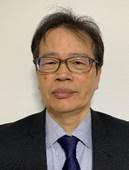 Yoshikazu Takahashi, Tohoku University, Japan
Yoshikazu Takahashi, Tohoku University, Japan
Professor Takahashi is currently the Director of Research and Development at Center for Innovative Integrated Electronic Systems (CIES) Tohoku University. Since 2018, he has also been the Deputy Program Director of the Energy System of the Internet of Energy (IoE) Society, an Inter-Ministry Strategic Innovation Promotion Program (SIP).
He worked at Fuji Electric Co., Ltd. until 2017, engaged in research and development of power semiconductor devices and power modules as the Director of the Next Generation Module Development Center, Chief Engineer.
He received B.S. degree from Waseda University in 1982, Ph. D. from Yamanashi University in 1998
He received the 47th Electrical Science and Engineering Award and the 17th S & T Award.
S1.P2.J
Plenary I – 2
Automotive Semiconductors in the CASE era and its “Jisso” technologies
Abstract
CASE (Connected, Autonomous, Sharing & Service, Electric) is a keyword of future mobility society. In the CASE era, semiconductors play an important role. Technology development of the semiconductor required for C, A, S and E respectively advances. Semiconductor for large-scale data processing technology and communication technology necessary for the digital society can utilize the result of other industry (Mobile phones, etc.). However, power devices for EVs, peripheral monitoring sensors for autonomous driving, and SoCs for driving control have many requirements specific to automobiles. They must be developed by automobile manufacturers and automobile parts manufacturers themselves. The status of C, A, S, and E is shown in the first part, the technical trends of power devices, sensors, and SoCs are shown in the second part, and the Jisso” technologies for automotive semiconductors are shown in the third part.
Biography
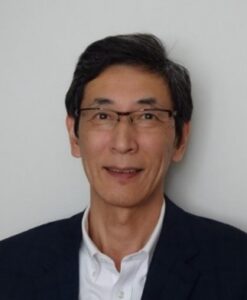 Yasushi Shinojima, Executive Officer, MIRISE Technologies Corporation, Japan
Yasushi Shinojima, Executive Officer, MIRISE Technologies Corporation, Japan
MIRISE is an automotive semiconductor research company established by Denso and Toyota in 2020.
Especially, it is researching power devices for electric vehicles and sensors and SoCs for autonomous driving.
He is directing the whole research project there.
Before joining MIRISE, he was General Manager of the Power Electronics Development Department at Toyota Motor Corporation.
The division mainly has developed power devices for HVs and EVs.
He received a bachelor’s degree in mechanical engineering from the University of Tokyo in Tokyo, Japan in 1985.
In the same year, he joined Toyota Motor Corporation and designed control ECUs and digital ICs for vehicle.
He has experience and deep knowledge of the electronic systems of vehicles in general.
S1.P3.E
Plenary I – 3
Materials and Technologies for Power Electronic Module
Abstract
There is an increasing demand for high-power electronic systems from various industrial sectors including automotive, power infrastructure and aerospace /1/. These systems are required to function faster, operate more efficiently, and most importantly, withstand extreme conditions and high temperature without having reliability issues. Therefore, there remains a need for alternative, environmental-friendly die-attach materials for packages that operate at high temperature conditions.
At higher temperatures, high thermal conductivity and high thermal stability interconnect materials are crucial in the manufacture of power devices for product reliability and efficiency. As an example, die-attach materials connect devices to their package to provide heat dissipation paths, which is a key component to ensure the entire system works efficiently and reliably.
Silver and Copper sintering technology has been evaluated as an approach for alternative high temperature die-attach. In the presentation will be given an overview, to add the technology solutions in the worldwide arena for powerful sintering interconnects. That means for different technical and metallurgical solutions any descriptions will be provided for reliable and efficient high temperature resistant interconnects.
Biography
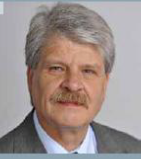 Prof. Dr.-Ing. habil Hans-Jürgen Albrecht, IAVT TU Dresden, Germany
Prof. Dr.-Ing. habil Hans-Jürgen Albrecht, IAVT TU Dresden, Germany
Prof. Dr. Albrecht was 15 years lecturer with the Humboldt University in Berlin, after that he worked as a project manager 25 years at Siemens AG in Berlin and now as a lecturer at the Technical University in Dresden.
S5.P1.J
Plenary II – 1
Diamond Devices Based on Unique Material Properties
Abstract
Diamond is expected to be a promising semiconductor for electronic applications, because of the excellent material properties of high breakdown electric field, high thermal conductivity, high carrier mobility of both electron and hole, and so on. Moreover, diamond has unique properties of hopping conduction and negative electron affinity (NEA). The hopping conduction property under the condition of heavy doping of impurities with concentration over 1020 cm-3 supplies the possibility of high current density diodes. The hydrogen terminated diamond has the NEA, which can be applied to a reliable electron emitter. In this talk, diamond electronic devices using not only superior material properties but also unique properties are introduced.
Biography
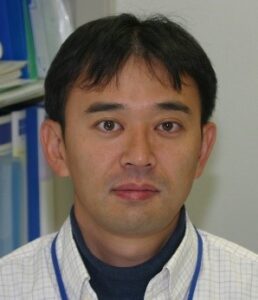 Toshiharu Makino, AIST, Advanced Power Electronics Research Center, Japan
Toshiharu Makino, AIST, Advanced Power Electronics Research Center, Japan
Toshiharu Makino, NIAINational Institute of Advanced Industrial Science and Technology, where he is currently a team leader in the Advanced Power Electronics Research Center. Toshiharu Makino received the B.E., M. E., and Ph. D. degrees in applied physics from University of Tsukuba in 1992, 1994, and 1997, respectively. From 1997, he worked for Panasonic Co. Ltd., and from 2002, for Konan University. In 2003, he joined National Institute of Advanced Industrial Science and Technology, where he is currently a team leader in the Advanced Power Electronics Research Center. His research interests presently focus on the optical and electrical properties of diamond, and device physics. He is a member of the Japan Society of Applied Physics and the Physical Society of Japan.
S5.P2.J
Plenary II – 2
Applications with SiC Power Devices for Railcar
Abstract
Mitsubishi Electric developed the world’s first train propulsion system applied SiC power modules in 2011. After that, we are developing SiC applied applications for railcar, which are propulsion systems and auxiliary power supply system. The SiC applied applications are high efficiency, compact size, and lightweight comparison with previous systems applied Si power devices. In this presentation, the concepts and features of our SiC product will be introduced.
Biography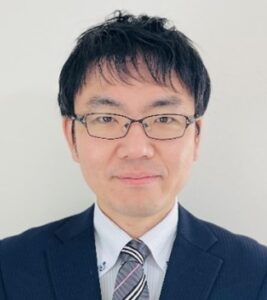
Tomonobu Mihara, Mitsubishi Electric Corporation, Japan
Tomonobu Mihara, Design Manager at Mitsubishi Electric Corporation, Japan Tomonobu Mihara is currently Design Manager for propulsion system and auxiliary power supply system with SiC device in railway application. He joined Mitsubishi Electric Corporation in 2012 and developed systems with SiC devices for domestic and overseas projects. He worked for Semiconductor Specialized Manufacturers from 2008 to 2012 as design engineer after M.Eng at Kyushu University.
S5.P3.E
Plenary II – 3
Reliability Aspects of 3D Integrated Power Devices
Abstract
The need for higher switching frequencies, higher operating temperatures, and lower volume of power devices increases remarkably due to the increased demand of products with higher power densities, lower weight, and smoother power output [1] [2]. Especially, wide band gap materials are needed to fulfill all requirements, but cannot reach their full potential with state of the art planar package integration [1]. To obtain reduced parasitics within the power loop, to reduce the devices footprint, improve heat removal and ensure package reliability, a three dimensional integration of power devices can be utilized [3] [4] [5] [6] [7]. The potential of 3D integration is enormous and essential in order to push power electronic devices to their theoretical limit. Recent developments could not only obtain improved switching proficiencies [7]. In addition, remarkable increase in active power cycling lifetime and capability to withstand critical overload conditions could be realized [2]. Finally, the establishment of advanced package technologies relies on several reliability and robustness tests. Test methods, including new methods for wide bandgap devices, are proposed. Some successful accomplishments are documented up to now [5] [8].
References
[1] S. Buetow und R. Herzer, „Characterization of GaN-HEMT in Cascode Topology and Comparison with State of the Art-Power Devices,“ Proceedings of the 30th International Symposium on Power Semiconductor Devices & ICs, Chicago, USA May 13-17 2012.
[2] U. Scheuermann, „Reliability of Planar SKiN Interconnect Technology,“ CIPS, Nuremberg, Germany March 6 – 8 2012.
[3] P. Beckedahl, M. Hermann, M. Kind, M. Knebel, J. Nascimento und A. Wintrich, „Performance comparison of traditional packaging technologies to a novel bond wire less all sintered power module,“ PCIM Europe, Nuremberg, Germany 17 – 19 May 2011.
[4] H. A. Mantooth und S. S. Ang, „Packaging Architectures for Silicon Carbide Power Electronic Modules,“ The International Power Electronics Conference IPEC-Niigata, 2018.
[5] P. Weidner und M. Kaspar, „Planar Interconnect Technology for Power Module,“ CIPS, Nuremberg, Germany 6 – 8 March 2012.
[6] M. Schmid, J. Pforr und G. Elger, „Power Electronic Package for Double Sided Cooling Utilizing Tile-Level Assembly,“ PCIM Europe, Nuremberg, Germany 16 – 18 May 2017.
Biography
 Christian Bäumler, PhD student of Chemnitz University of Technology, Germany
Christian Bäumler, PhD student of Chemnitz University of Technology, Germany
Christian Bäumler studied Electrical Engineering at Chemnitz University of Technology from 2011-2017. In 2014 he finished his bachelor thesis, in 2017 his master thesis with the topic “Switching behavior and losses of normally-off GaN transistors”. In 2018 he joined the scientific staff at the chair of power electronics and EMC at Chemnitz University of Technology. Focus of his work is on robustness and reliability of power electronic devices.
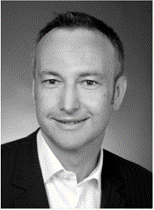 Jörg Franke, PhD student of Chemnitz University of Technology, Germany
Jörg Franke, PhD student of Chemnitz University of Technology, Germany
Jörg Franke studied Electrical Engineering at Chemnitz University of Technology from 2009-2014. In 2012 he finished his bachelor thesis, in 2014 his master thesis with the topic “Investigation of measurement accuracy of virtual junction temperature Tvj in power cycling tests”. In 2015 he joined the scientific staff at the chair of power electronics and EMC at Chemnitz University of Technology. Focus of his work is on failure analysis and reliability of power electronic devices.
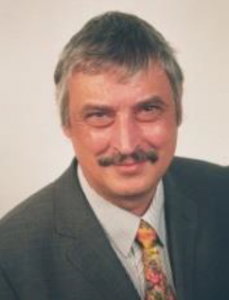 Dr. Josef Lutz, Professor at Chemnitz University of Technology, Germany
Dr. Josef Lutz, Professor at Chemnitz University of Technology, Germany
Josef Lutz was from 1983 with Semikron Elektronik, in Nuremberg. He invented the Controlled Axial Lifetime (CAL) diode. In 1999 he graduated as Ph.D. in electrical engineering at the University of Ilmenau. Since August 2001, he is Professor for Power Electronics and EMC at the Chemnitz University of Technology. He is a senior member of IEEE and serves in several international committees. He is a member of the advisory board of the Journal Microelectronics Reliability. His leading publication is the book “Semiconductor Power Devices – Physics, Characteristics, Reliability”, printed in German (2006, 2012), in English (2011, 2018) and in Chinese (2013).
Keynote Speakers Abstracts and Biographies
Invited Speakers Biographies
